Once in a while, in doing my research, I discover that some well-known Americans traveled to Paris during my favorite period, between the late 19th and early 20th centuries. Recently, I learned that one of my favorite American artists, Edward Hopper, was one of them.
If you haven’t heard of Edward Hopper, he was a Realist painter most known for ‘Nighthawks’, which shows a couple of lonely souls sitting in a late-night diner. He produced it in 1942 when he was around 60 years old.
Decades earlier, a 24-year-old Hopper went to live in Paris. His parents, who lived in the Hudson Valley area of New York, were members of the local Baptist Church. Through the church, they helped arrange for Edward to stay in a building owned by the Evangelical Baptist Church in Paris, at 48 rue de Lille. He stayed there from fall of 1906 to spring of 1907. In one letter home, he described how he only needed to walk a short distance to cross the river and end up at the Louvre Museum.
Hopper took his sketch book everywhere as he wandered the streets in the City of Light. He fell in love with the city’s design and architectural details, especially the slate roofs and iconic chimneys. He would paint many major landmarks in Paris, but I prefer his other works that focused in more on smaller images, like these paintings of the scenes at his apartment building:
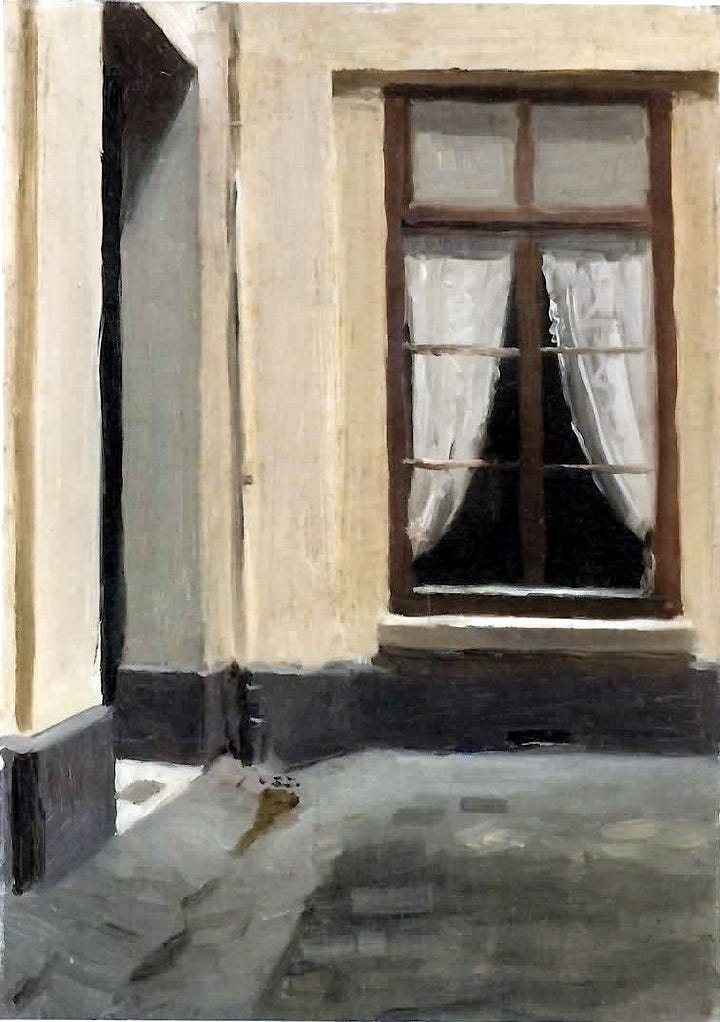
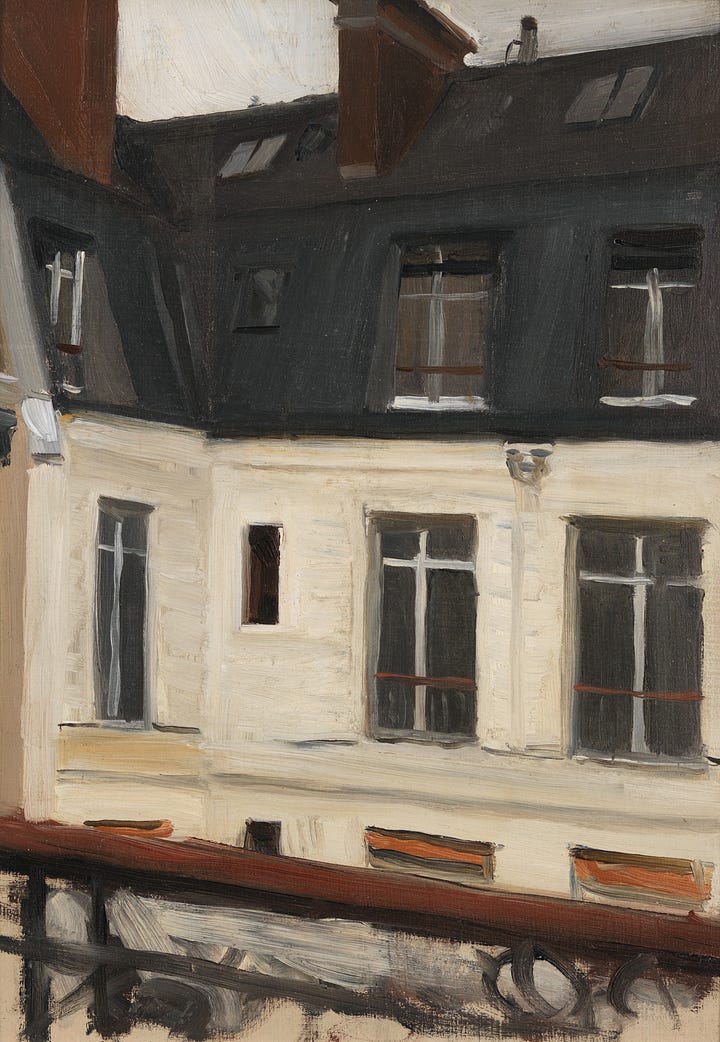
Hopper produced dozens of gorgeous sketches using charcoal, ink and watercolor. He traveled everywhere, from the banks of the Seine up to Belleville, a neighborhood in the northeastern region of Paris.
“Paris is a very graceful and beautiful city, almost too formal and sweet to the taste after the raw disorder of New York.”
Edward Hopper in a letter to his mother, 1906
He did countless sketches and watercolors of individuals, like the one below, entitled ‘Paris Woman Walking’. I love that it’s just the woman with no scenery around her — it allows my imagination to wonder where she was going and exactly what part of the city she was walking in. And please, look at that hat!
This is a work he did along the Seine River, which was near his apartment. One can go right down to the water’s edge, which he must have done to observe these down-and-out looking shadowy figures under the bridge:
Hopper also did raw sketches of women’s updo’s and women’s and men’s clothing, hats and accessories:
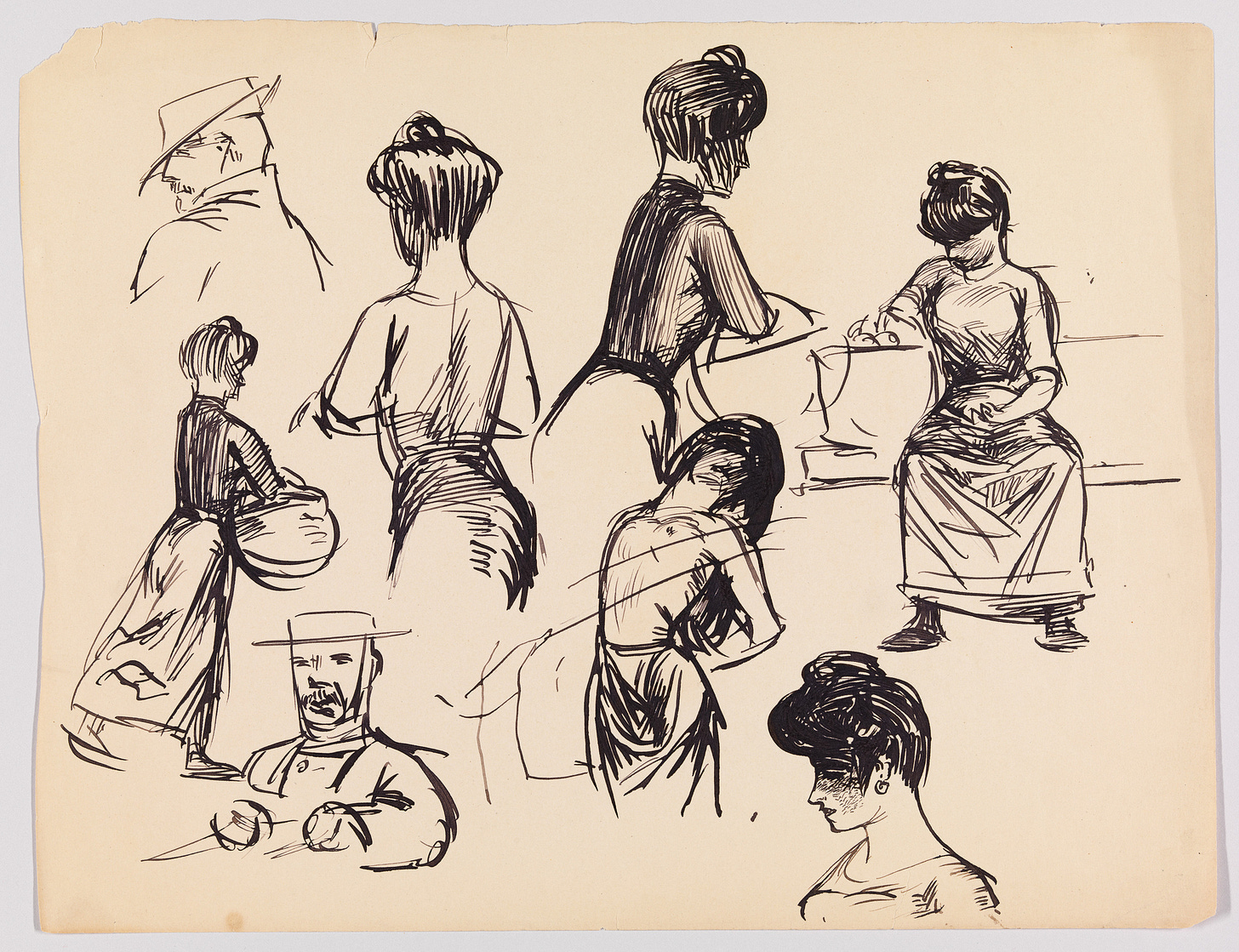
“The people here in fact seem to live in the streets, which are alive from morning until night… with a pleasure-loving crowd that doesn’t care what it does or where it goes...”
Edward Hopper letter to his mother, 1906
Here’s a watercolor of a man seated at a table, and I could tell that just by looking at the color and style of the table, chair, his carafe d’eau and drink, this surely is Paris:
Then there’s this woman below, seated and with very sparse scenery around her — but just look at that hat, her shoes and the color of her lipstick. I think this also shows that in Paris during that time, women could absolutely have a drink on their own; even though they didn’t have too many legal rights at the time — but cafes were off-limits in terms of patriarchal restriction.
Hopper’s sketches also tell us that he spent time at the opera. There are a number of drawings of women in the opera with their fancy hats and demure poses.
Finally, may I please draw your attention to this rotund gentleman (who looks like a banker or newspaper editor) seated at a table with his top hat and cane? Again, look at the color of the table. Dead giveaway: Paris.
Much of Hopper’s later work back in the U.S. was known for depicting images of solitude, whether they were of lone buildings or individuals. I personally can see this style reflected in these early watercolors from Paris. The Whitney Museum in New York has probably the majority (if not all) of Hopper’s sketches from that time.
By the way, I was very happy to hear that during his time in the French capital, he became familiar with the photographs of my very favorite French photographer, Eugène Atget, who similarly captured quiet images of vieux Paris before it was modernized in the late 19th century.
Hopper would go back to Paris a few more times between 1907 and 1910, but after that, he never returned. He would later say it would take him 10 years to get over Europe.
Sources:
The Whitney Museum: Edward Hopper collection


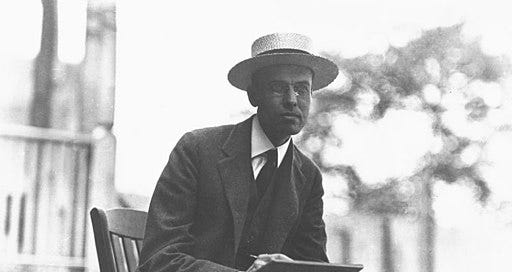




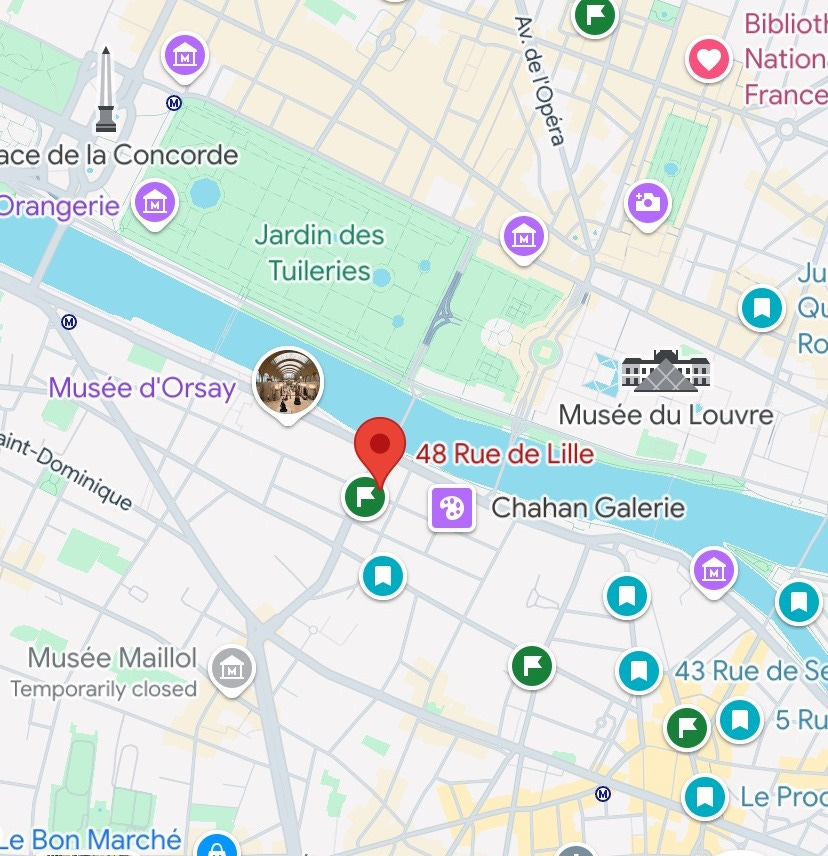

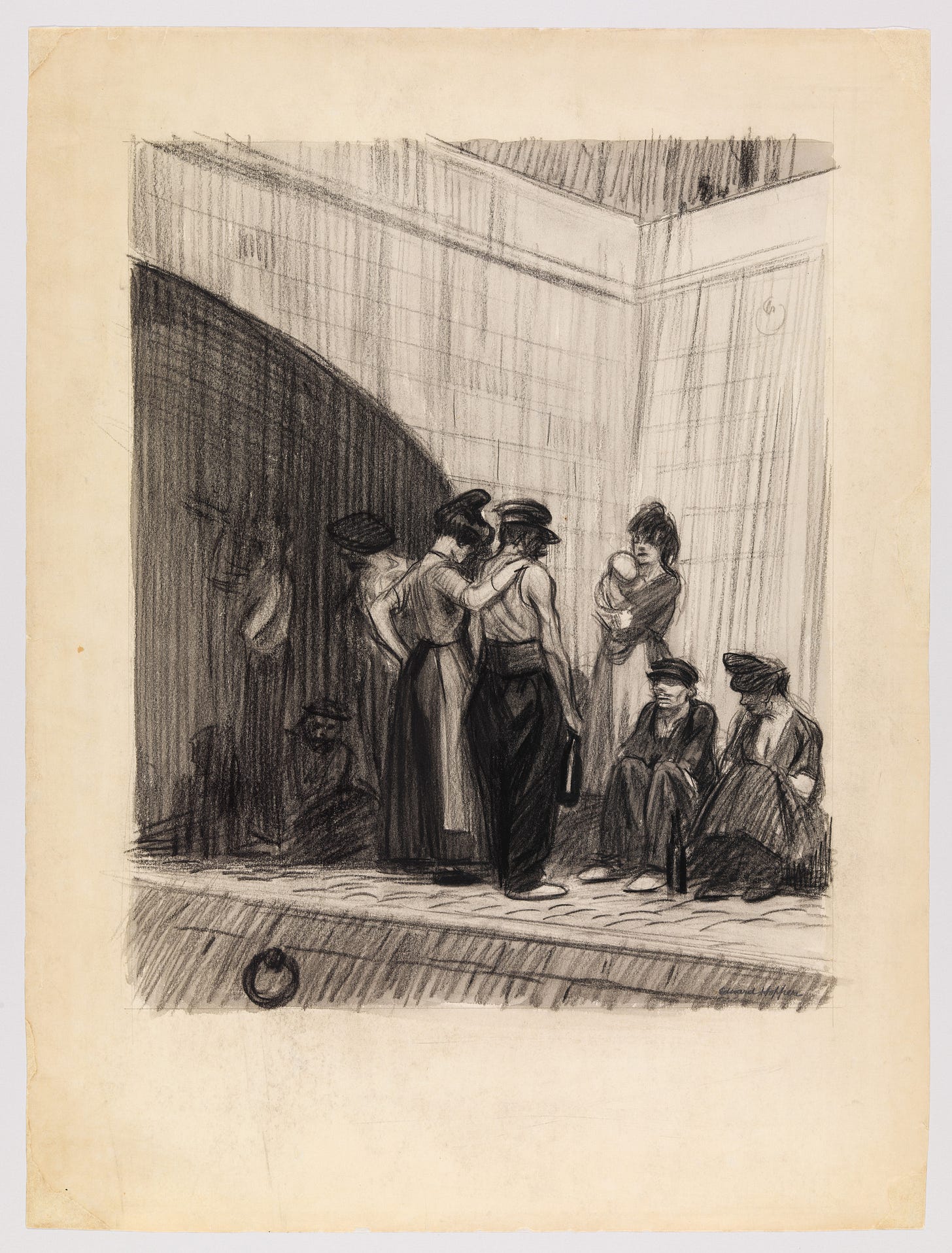
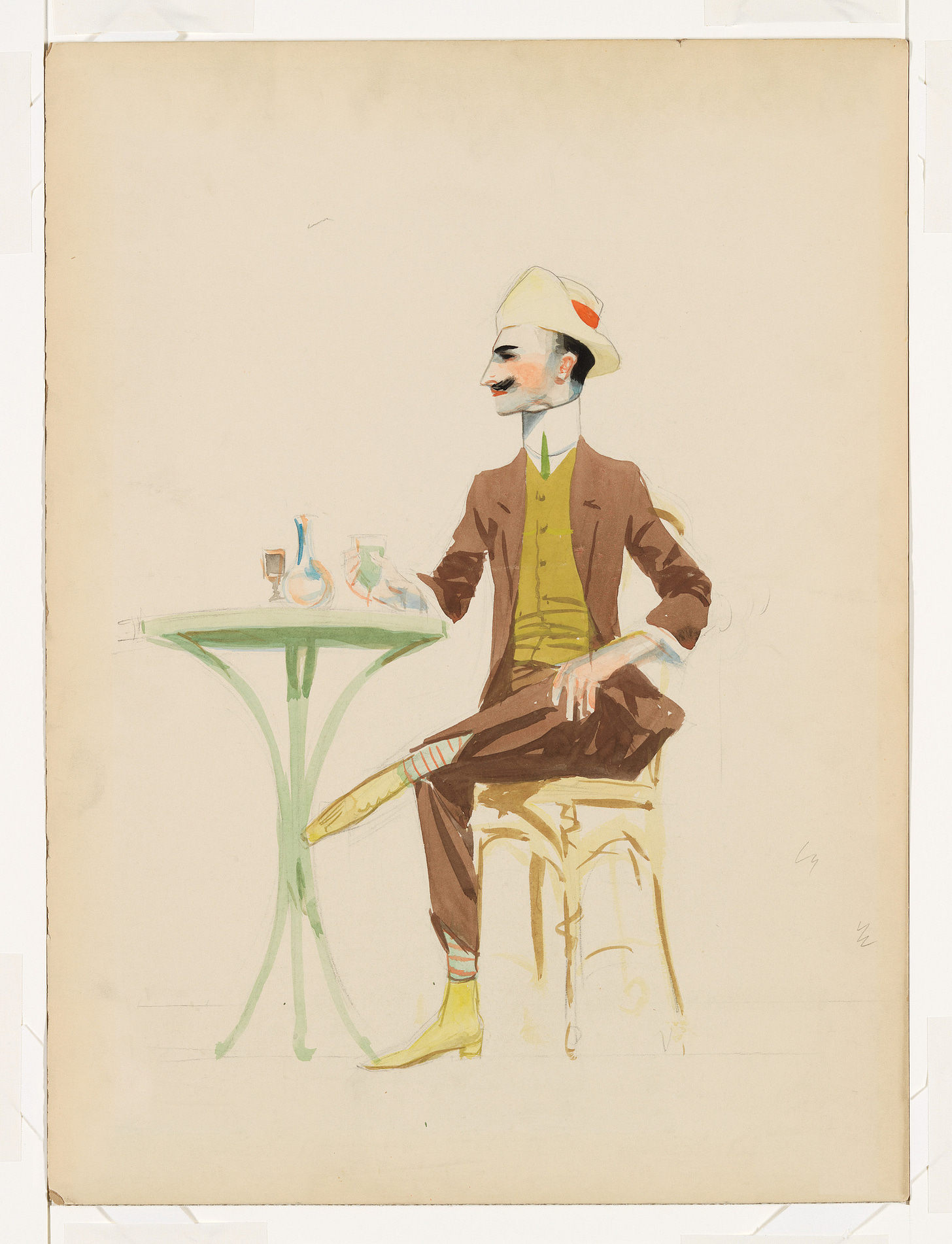



Hopper is one of my favorites but I have never seen this collection. Thanks so much for sharing, loved this!
It’s nice to see his parents’ effort paid off, having come from a more conservative background. They went out of their way to send him to Europe at such an early age through the church.
It’s a nice little tidbit to hold onto when viewing his later work. It informs his eagle eye for painting people and their interior dialogues.